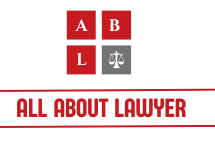Starbucks Dress Code Lawsuit, Workers Sue Over $300 Dress Code Company Refuses to Pay for Required Black Shirts
Starbucks workers are suing the company in multiple states because it changed its dress code but refused to reimburse employees for required clothing purchases, which violates state laws requiring companies to reimburse workers for expenses that primarily benefit the employer.
What’s Happening: The Starbucks Dress Code Lawsuits Explained
Starbucks workers in three states filed lawsuits on September 18, 2025, against the coffee giant over its new dress code that went into effect on May 12, 2025. Here’s what you need to understand about this case and what it means for employee rights.
The New Dress Code Requirements
The new dress code requires all workers in North America to wear a solid black shirt with short or long sleeves under their green aprons. Shirts may or may not have collars, but they must cover the midriff and armpits. Employees must wear khaki, black or blue denim bottoms without patterns.
Specific Requirements Include:
- Solid black short and long-sleeved crewneck, collared, or button-up shirts
- Bottoms in khaki, black, or blue denim
- Shoes in black, grey, navy blue, brown, tan, or white
- No “theatrical makeup” or nail polish
- No sleeveless shirts or exposed midriffs
Table of Contents
The Legal Problem: Why Workers Are Suing
The old dress code was loosely enforced, but under the new dress code, employees who don’t comply aren’t allowed to start their shifts. This strict enforcement created a financial burden for workers.
The Core Legal Issue: The lawsuits allege that Starbucks’ dress code violates state laws that require companies to reimburse workers for expenses that primarily benefit the employer.
Real Employee Impact
Brooke Allen, a full-time student who works at a Starbucks in Davis, California, was told by a manager she couldn’t work unless she complied with the new dress code. Stories like hers are driving these lawsuits.
The financial burden hits workers hard. “A lot of us are already living paycheck to paycheck,” explains the reality many Starbucks employees face when suddenly required to purchase specific clothing.
Legal Grounds: State Laws Being Violated
Colorado Law Specifics
Colorado law also prohibits employers from imposing expenses on workers without their written consent. This makes Colorado one of the strongest jurisdictions for these claims.
California Labor Code
California has robust employee protection laws requiring employer reimbursement for necessary job expenses. When employers change dress codes substantially, they typically must cover the costs.
Multi-State Legal Strategy
Workers filed lawsuits in multiple states because different state laws provide various protections for employees facing employer-mandated expenses.
Related lawsuit: Deutsche Bank Lawsuit CEO Faces Personal £150M Lawsuit

What Starbucks Claims vs. Reality
Starbucks’ Defense
“As part of this change, and to ensure our partners were prepared, partners received two shirts at no cost,” Starbucks said about its workers.
Why This Isn’t Enough
Two free shirts don’t cover:
- Multiple shirts needed for regular work schedules
- Specific pants requirements (many workers didn’t own khaki or appropriate denim)
- New shoes in approved colors
- Replacement costs for normal wear and tear
The lawsuits argue that providing only two shirts while requiring a complete wardrobe change doesn’t meet legal reimbursement requirements.
Your Rights When Employers Change Dress Codes
When Employers Must Reimburse You
You’re typically entitled to reimbursement when:
- The dress code change is substantial (not minor adjustments)
- You must purchase specific items you wouldn’t otherwise buy
- The requirements primarily benefit the employer’s image or brand
- State law requires reimbursement for job-related expenses
When They Don’t Have to Pay
Employers usually aren’t required to reimburse for:
- General professional attire (like “business casual”)
- Items you’d likely own anyway (like black pants)
- Minor dress code clarifications
- Safety equipment (though this has separate requirements)
State-by-State Variations
Strong Employee Protection States:
- California: Requires reimbursement for all necessary job expenses
- Colorado: Prohibits imposing expenses without written consent
- Illinois: Has specific uniform reimbursement laws
Weaker Protection States:
- Many states have minimal requirements
- “At-will” employment doesn’t eliminate reimbursement rights
- Federal law provides limited dress code protections
What This Means for Other Workers
Precedent Implications
If these lawsuits succeed, they could establish important precedents for:
- When dress code changes require reimbursement
- How much reimbursement is adequate
- Employee rights vs. employer branding needs
Other Industries at Risk
Retail and Food Service: Many companies could face similar challenges if they:
- Require specific branded clothing
- Change dress codes without covering costs
- Enforce strict compliance with financial penalties
Healthcare and Service Industries: Uniform requirements often blur the line between employer needs and employee expenses.
Practical Steps for Affected Employees
Document Everything
Keep Records Of:
- Original dress code policies
- New dress code requirements
- Receipts for required clothing purchases
- Communications about enforcement
- Any disciplinary actions for non-compliance
Know Your State Laws
Research your state’s requirements for employer reimbursement. Key questions:
- Does your state require expense reimbursement?
- Are there specific uniform or clothing provisions?
- What constitutes a “necessary business expense”?
Before Purchasing Required Items
Consider These Steps:
- Ask for reimbursement in writing before making purchases
- Document the employer’s response to your request
- Keep all receipts for potential legal claims
- Check if your employer provides any items before buying
When to Seek Legal Help
Contact an employment attorney if:
- Your employer requires expensive specific clothing
- You’re disciplined for not purchasing required items
- Your state has strong employee protection laws
- Multiple coworkers face the same issue
For guidance on workplace legal issues, consider consulting with employment lawyers who understand discrimination and workplace rights.
The Bigger Picture: Employment Law Trends
Growing Employee Awareness
Workers are increasingly aware of their rights regarding job-related expenses. Social media and legal resources help employees understand when employer requirements cross legal lines.
Corporate Branding vs. Employee Rights
The tension between company image control and employee financial burden is intensifying. Courts are being asked to balance these competing interests more frequently.
Economic Pressures
With inflation affecting worker budgets, even small employer-required expenses can create significant hardship. This economic reality is driving more legal challenges.
How Employers Can Avoid Legal Problems
Best Practices for Dress Code Changes
Smart Approaches Include:
- Gradual implementation allowing employees to acquire items over time
- Reimbursement programs for required purchases
- Providing core items like branded shirts or aprons
- Clear communication about what will and won’t be covered
Legal Compliance Strategies
Proactive Steps:
- Review state laws before implementing changes
- Consult employment attorneys for major policy changes
- Consider employee financial impact in policy development
- Provide written policies about expense reimbursement
Timeline and Next Steps in the Lawsuits
Current Status
The lawsuits were filed in September 2025 and are in early stages. Expect:
- Motion practice as Starbucks responds to claims
- Discovery phase gathering evidence about costs and enforcement
- Possible class certification if courts find widespread similar damages
- Settlement negotiations as costs and exposure become clear
Potential Outcomes
If Workers Win:
- Monetary damages for clothing costs
- Changes to Starbucks’ dress code policy
- Precedent affecting other employers
- Potential class-action expansion
If Starbucks Wins:
- Validation of current dress code approach
- Limited impact on other employer policies
- Workers may still have state-specific claims
Related Workplace Rights Issues
Uniform and Equipment Laws
Many states have specific laws about:
- When employers must provide uniforms
- Reimbursement for required safety equipment
- Cleaning and maintenance of work clothing
- Replacement of worn-out required items
For broader workplace legal issues, employees might also need to understand what employment lawyers can help with regarding workplace violations.
Discrimination Concerns
Dress codes can sometimes create discrimination issues:
- Religious accommodation requirements
- Gender-based clothing requirements
- Cultural or ethnic appearance restrictions
- Disability-related clothing needs
Financial Impact on Workers
Real Costs of Compliance
Typical Expenses Include:
- Shirts: $15-40 each (need multiple for regular washing)
- Pants: $25-60 per pair (specific colors/styles)
- Shoes: $30-80+ (approved colors only)
- Total: $100-300+ for complete wardrobe change
Proportional Impact
For workers earning minimum wage, these expenses represent:
- 10-20 hours of work (before taxes)
- Significant portion of weekly take-home pay
- Money diverted from essential expenses
This economic reality drives the legal arguments about employer responsibility.
What Other Companies Should Learn
Risk Assessment
Companies should evaluate:
- Current dress code flexibility
- State law requirements for their locations
- Employee financial impact of any changes
- Cost of reimbursement vs. legal risk
Policy Development
Better approaches include:
- Grandfathering existing appropriate clothing
- Phased implementation over several months
- Partial reimbursement programs
- Alternative compliance options
Frequently Asked Questions About the Starbucks Dress Code Lawsuit
What exactly are Starbucks workers suing for?
Workers are suing because Starbucks changed its dress code but refused to reimburse employees for required clothing purchases, claiming this violates state laws requiring companies to cover job-related expenses. They want reimbursement for money spent on required black shirts, specific pants, and approved shoe colors.
How much money do workers have to spend on the new dress code?
Workers typically spend $100-300+ to comply fully with the new requirements. This includes multiple black shirts (since two free shirts aren’t enough for regular work schedules), khaki or approved denim pants, and shoes in specific colors. For minimum-wage workers, this represents 10-20 hours of work.
What states are involved in the lawsuit?
Starbucks workers in three states filed legal action, with confirmed cases in California and Colorado. The lawsuits allege violations of state laws that require companies to reimburse workers for expenses that primarily benefit the employer.
Did Starbucks provide any clothing to workers?
Yes, Starbucks said “partners received two shirts at no cost” as part of the dress code change. However, workers argue this isn’t sufficient since they need multiple shirts for regular work schedules, plus the company didn’t provide required pants or shoes.
Can other employees in similar situations sue their employers?
Yes, if employers require specific clothing purchases without reimbursement and state law requires covering job-related expenses. Success depends on your state’s laws and whether the dress code change creates substantial new expenses that primarily benefit the employer rather than general professional appearance.
What happens if workers don’t comply with the new dress code?
Under the new dress code, employees who don’t comply aren’t allowed to start their shifts, unlike the old policy which was loosely enforced. This strict enforcement forces workers to purchase required items or lose work hours.
How long will these lawsuits take to resolve?
Employment lawsuits typically take 1-3 years to resolve, depending on whether they settle or go to trial. The cases were just filed in September 2025, so expect motion practice, discovery, and potential class certification processes before any resolution.
What should workers do if their employer changes dress codes?
Document everything, including the old and new requirements, keep receipts for required purchases, ask for reimbursement in writing, and research your state’s laws about job-related expenses. If your employer requires expensive specific items, consider consulting an employment attorney.
The Bottom Line: What This Case Really Means
The Starbucks dress code lawsuit represents a growing trend of workers standing up to employer policies that shift financial burdens onto employees. The core legal principle is clear: state laws that require companies to reimburse workers for expenses that primarily benefit the employer are being tested in new ways.
Key Takeaways for Workers
Know Your Rights: Many states require employers to cover job-related expenses, including substantial dress code changes.
Document Everything: Keep records of dress code changes, required purchases, and employer communications about compliance.
Don’t Assume You’re Stuck: Just because you’re an at-will employee doesn’t mean you have no rights regarding employer-imposed expenses.
For Employers
Think Before You Change: Substantial dress code modifications can trigger legal obligations for reimbursement in many states.
Budget for Compliance: The cost of providing items or reimbursing employees is often less than defending lawsuits and paying damages.
Get Legal Advice: Employment lawyers can help navigate state-specific requirements before implementing changes.
The Broader Impact
This case could establish important precedents about the balance between employer branding control and employee financial protection. As more workers understand their rights and economic pressures intensify, expect more challenges to employer policies that impose unreimbursed costs on workers.
The outcome will likely influence how companies across industries approach dress code policies, potentially shifting the standard practice toward greater employer responsibility for required clothing costs.
For workers facing similar situations, the Starbucks case demonstrates that legal remedies exist when employers impose substantial clothing requirements without adequate reimbursement. Understanding your state’s laws and documenting your expenses could be crucial for protecting your rights.
This article provides analysis of current legal proceedings and general information about workplace dress code rights. Laws vary significantly by state and situation. Workers facing dress code reimbursement issues should consult with qualified employment attorneys familiar with their state’s specific requirements and protections.
About the Author

Sarah Klein, JD, is a licensed attorney and legal content strategist with over 12 years of experience across civil, criminal, family, and regulatory law. At All About Lawyer, she covers a wide range of legal topics — from high-profile lawsuits and courtroom stories to state traffic laws and everyday legal questions — all with a focus on accuracy, clarity, and public understanding.
Her writing blends real legal insight with plain-English explanations, helping readers stay informed and legally aware.
Read more about Sarah
